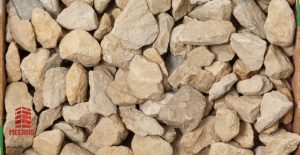20/40 aggregate sand, commonly used for construction and garden projects. It has a reputation for its ability to adapt and durability, making it an excellent choice for all types of applications.
Important features of the 20/40 aggregate sand
There are many important characteristics of 20/40 aggregate sand. In this article, we are going to talk about the characteristics of 20/40 sand, so stay with us until the end.
Meeras is one of the most important 20/40 aggregate sand suppliers in Dubai and Sharjah, Click here for more information and to view products.

1- The particle size of 20/40 aggregate sand
The particle size is one of the most important characteristics of 20/40 aggregates. The numbers 20/40 refer to the size range of the particles, with the largest particles being 20 mesh and the smallest being 40 mesh. This implies that a combination of smooth and coarse particulate matter is stored in the sand, which allows better compaction and stability to be obtained when applied as base material.
2- The distribution of 20/40 aggregate sand
A key factor in its performance is the distribution of 20/40 sand. In addition to filling in gaps, the presence of different particle sizes ensures a more reliable base that reduces the risk of settling and moving over time. It is therefore suitable for the use of roads, where there is a need to build strong foundations.
3- Shape
In shape, the grains are normally circular or triangular and this makes them easier to link up with particles. This interlocking effect enhances the stability and load distribution capacity of sand which makes it able to be used for applications like Concrete Paver Production or as a material base for pavers.
Click here to obtain information about 3/4 aggregate sand.
4- Drainage capacity
In view of its particle size distribution and shape, 20/40 aggregate sand has a great drainage capacity. In places where they are used, void spaces between particles can allow water to flow through easily and prevent pooling or flooding. In addition, this enables 20/40 aggregates to be used as part of drainage systems, or in combination with pavement that is subject to permeability.
5- Resistance to erosion
Resistance to erosion is a further advantage of using 20/40 sand. Compared to rounded sand, it is less vulnerable to water and wind erosion due to the angular shape and interlocking nature of its grains. This will make it especially suitable for coastal areas and locations where there are high risks of flooding.
6- Cost-efficient of 20/40 aggregates sand
The 20/40 aggregates are widely available and cost-efficient. It may come from a variety of quarries or sand deposits, which makes it easy to be used for any size construction project. For both commercial and residential applications, its affordability is such that it is an attractive option.

Is 20/40 aggregate sand appropriate for all applications?
It is important to be clear that 20/40 aggregates are not appropriate for all applications. For example, it may cause discomfort to use in playgrounds or sporting areas where humans are close to the sand because of its angular shape. It may be a better option if round sand is used.
In conclusion
20/40 aggregate sand is a widely used component of construction and landscape projects, which can be utilized in many different ways in the UAE. It is an excellent choice for various applications due to its particle size distribution, structure, drainage characteristics, resilience against erosion, and affordability. However, before selecting that type of sand special requirements for construction projects and possible limitations should be taken into account.

